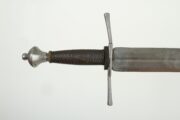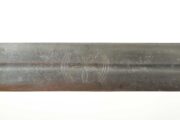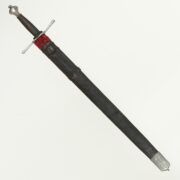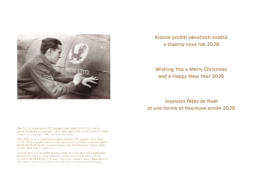
01 Execution Sword, Bohemia, 1st half of 17th century
Fotogalerie





The execution sword is not a weapon in the true sense of the word, but rather an instrument used to mete out capital punishment. Therefore, the shape of the sword is specially adapted to its purpose – to behead the condemned. The hilt is usually long enough to allow the master executioner to grasp it with both hands placed underneath it. The simple guard, which merely imitated the form of a real combat sword, is a matter of formality. It had no defensive function, and it did not serve to stop an opponent’s blows. Like other instruments of execution, the execution sword was considered an impure object that could not be used in honourable combat. For this reason, the broad double-edged blade was sometimes perforated with several circular holes to prevent it from being curled and possibly used for honourable combat. The blade usually depicted various objects of martyrdom – a breaking wheel, a gallows, etc.
This execution sword has a straight double-edged blade with a rounded tip. Three execution wheels are engraved on both sides of the blade and inlaid with a yellow metal. The wooden grip is covered with leather and bordered on both sides by rings of braided brass wire. The rarely preserved wooden scabbard of this sword is covered with leather and also with red velvet at the top. It is decorated with linear pressing all over its surface.
Length 1035 mm, blade length 822 mm, blade width, 57 mm, weight 1 858 g, weight including sheath 2 364 g.
Aktuálně

Oceňovaní spojenci - Pozemní útvary československé branné moci v bitvě o Francii očima francouzského velení

Vánoce a přelom roku v zahraniční misi na Slovensku v roce 2022

Prosinec 1944 – oficiální vydání prvních poštovních známek osvobozeného Československa









